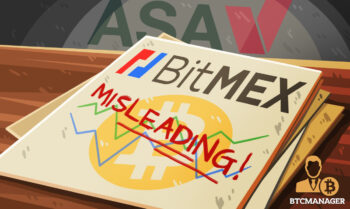2020-1-28 00:26 |
A research conducted by BitMex indicate that two Bitcoin mining firms found out one transaction block at exactly the same time. BitMEX Research tweeted the discovery stating that the stale block took place exactly at block height 614,732. The two firms in competition were Bitmain’s BTC.com as well as Poolin.
Bitcoin had a stale block today, at height 614,732.
* Size: 0.97 MB, Time: 05:37:37UTC, Miner: https://t.co/yVUGGpvX6f
* Stale block – Size: 0.98 MB, Time: 05:37:56UTC, Miner Poolinhttps://t.co/uzJXPMgOmm
This is the first stale block we have found since 16 Oct 2019 pic.twitter.com/zmSg9gsL5T
— BitMEX Research (@BitMEXResearch) January 27, 2020
BitMEX also reported that BTC.com emerged the ‘winner’ of the block which resulted to a stale block for Poolin. Poolin was started by Bitmain’s former employees and now Bitmain is seeking legal address for the violation of a non-compete agreement.
Currently, the mining difficulty for Bitcoin is at all time high (ATH) which means that it is difficult for stale blocks to occur, but this is only in theory. But, as Bitcoinist reports, after several months, two mining pool who are in competition are likely to occur on one block header exactly at the same time. The last time such an event took place was in October last year which was between BTC.com and Bitmain’s Antpool.
When a stale block occurs, there are fears that it could be as a result of double spend. However, BitMEX Research was quick to allay such fears stating that they had underatek an analysis of the likelihood of a double spend. The researchers noted that stale block had 39 txs and the winning block 614,733 had 38 txs. In this regard, only 0.00034801 or US$3 had been double spent.
Since the amount of Bitcoin which could have been double spent is very little, it is improbable that a mischievous blockchain ‘reorg’ attempt or attack could have been attempted. The computing potential or hash rate of the Bitcoin network makes it almost impossible to have a 51% attack, albeit theoretically.
Stale or rogue blocks are also possible during hard forks when the main chain divides into two distinct ways. In most cases, disagreement on different protocols can lead to supporters agreeing to move to form a fresh chain. This is how Bitcoin Cash emerged and has also led to another hard fork which has created Bitcoin SV.
origin »Blocknet (BLOCK) на Currencies.ru
|
|

















